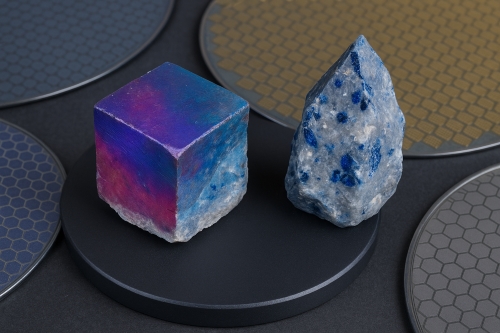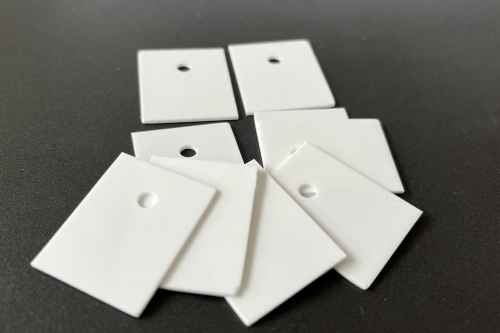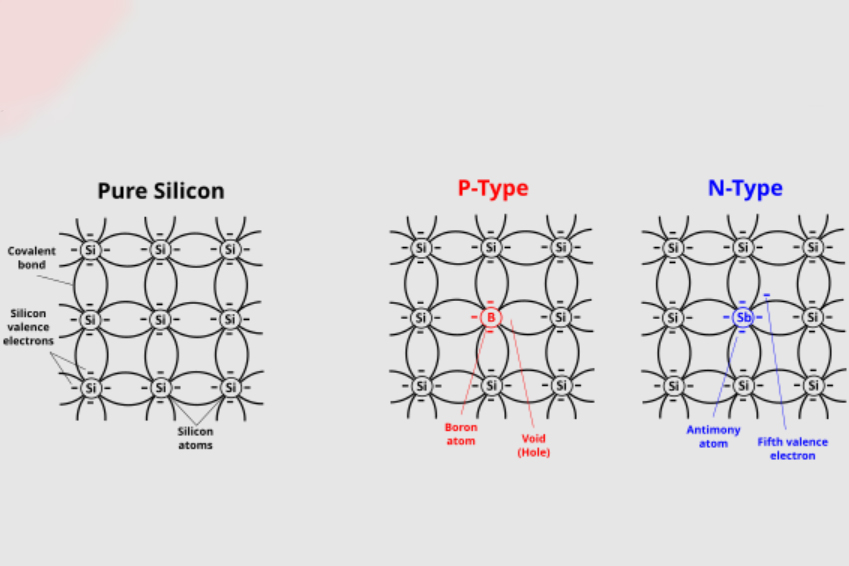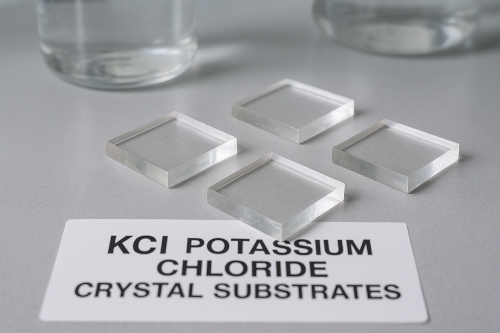
Why Potassium Chloride (KCl) Is A Go-To Substrate in Infrared Spectroscopy
Infrared (IR) spectroscopy has been a central method in materials science, chemistry, and the life sciences for decades. From analyzing chemical bond vibrations to molecular fingerprinting, infrared techniques—led by Fourier Transform Infrared (FTIR) spectroscopy—allow researchers to collect vital information about materials without destroying them. Most central to these measurements is the choice of using the proper window or substrate material.
Potassium chloride (KCl) crystal substrates are one of the most widely used substrates for infrared spectroscopy. Their transparency, broad range of transmission, and ease of experimentation make them the unbeatable choice of substrate in labs globally.
In this article, we will discuss why KCl substrates are so important, how they are used in FTIR spectroscopy, and how they compare to other widely used window materials such as sodium chloride (NaCl) and calcium fluoride (CaF₂).
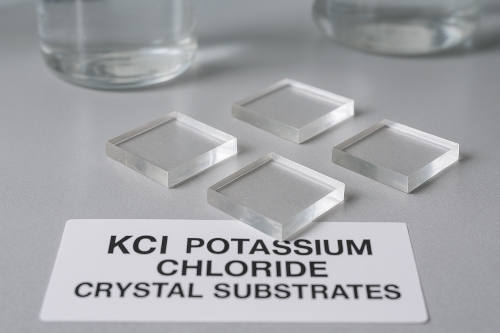
The Role of Substrates in Infrared Spectroscopy
For infrared spectroscopy, the substrate or window material must be such that it does not absorb the IR light in the region of interest but transmits it. If the material absorbs strongly, it contaminates the measurement and obscures the molecular vibrations of the sample. Therefore, choosing the appropriate substrate is a critical step, especially for FTIR spectroscopy, where high precision and large spectral range are needed.
Potassium chloride crystals are transparent in the ultraviolet (UV) to near-infrared (NIR) and far into the mid-infrared (MIR) range and therefore highly versatile. Their physical and optical characteristics, combined with the fact that they are simple to work with, have made them a component of thousands of spectroscopy setups.
Potassium Chloride (KCl) in FTIR Spectroscopy
FTIR spectroscopy is founded on the measurement of infrared radiation absorption or transmission by a specimen within a broad wavelength range. KCl substrates are commonly used in sample cells, windows, and pellets of FTIR because of the following features:
1. Wide Range of Transmission: KCl is a good IR radiation transmitter ranging from nearly 0.21 μm in the ultraviolet to 20 μm in the infrared. This wide range allows researchers to study both organic and inorganic compounds in the vast majority of the mid-infrared "fingerprint region" in which characteristic molecular vibrations occur.
2. Fine Optical Clarity: KCl crystals can be fabricated into substrates with polished surfaces of extremely high quality, reducing scattering and bending of the infrared beam. This results in cleaner spectra and better accuracy of interpretation.
3. Compatibility with Pelleting Techniques: The most common FTIR sample preparation technique is grinding a small amount of the specimen in anhydrous KCl powder and pressing it into a transparent pellet. Because KCl is IR-transparent itself, the pellet can serve both as substrate and sample holder without contributing interfering absorption bands.
4. Chemical Neutrality: KCl is relatively inert and will not react with the majority of organic compounds present under normal conditions. This minimizes sample degradation or unwanted chemical reactions upon analysis.
5. Cost-Effectiveness: Compared to some more exotic IR substrates, KCl is available and inexpensive, making it a "go-to" for routine lab use.
With these benefits, KCl is also seen as a normative substrate in FTIR uses, especially in organic compound analysis, drug analysis, and polymers.
Comparison to Sodium Chloride (NaCl) Substrates
Another halide crystal that is widely employed in infrared spectroscopy is sodium chloride (NaCl). NaCl and KCl look comparable at first sight: each is optically transparent, extremely inexpensive, and transmits extensively in the mid-infrared. However, major differences divide them:
• Transmission Range: NaCl has a transmission window of approximately 0.25 μm to 15 μm, slightly lower than the 0.21–20 μm range of KCl. This indicates KCl is more covered at longer IR wavelengths.
• Hygroscopic Nature: Both NaCl and KCl are hygroscopic, i.e., easily absorb from the air. NaCl is, however, more sensitive to water than KCl, so KCl is slightly more robust under standard laboratory conditions.
•Mechanical Properties: NaCl is softer compared to KCl. While this is easier to polish, it also means it is more easily scratched. Harder KCl substrates may be less susceptible to standard handling.
Both NaCl and KCl are cheap and widely available in practice, but where greater IR coverage and mechanical robustness are required, the KCl is used.
Comparison with Calcium Fluoride (CaF₂) Substrates
Calcium fluoride (CaF₂) is another significant class of infrared substrates, and it finds high-performance spectroscopy application particularly valuable. Contrary to halide crystals, CaF₂ is part of the fluoride crystal family, and its physical properties are quite different from KCl:
•Transmission Range: CaF₂ transmits between about 0.13 μm deep ultraviolet and about 9 μm infrared. This is appropriate for use where both UV and visible transparency is desired, but its infrared transmission is much more limited than that of KCl.
•Moisture Resistance: CaF₂ is not hygroscopic, in contrast to KCl. It resists moisture and atmospheric degradation, which makes it more durable and suitable for extended exposure to humid conditions.
•Mechanical and Thermal Strength: CaF₂ is more mechanically tough than KCl and is also more immune to thermal shock. Its toughness makes it a convenient choice in high-power optical devices or applications in which substrates are exposed to more rigorous physical conditions.
•Cost Factor: CaF₂ substrate materials are generally more expensive than KCl. While they are more resistant and possess greater UV transmission, their limited IR coverage makes them less desirable for general FTIR application.
Thus, for routine FTIR spectroscopy requiring thorough infrared testing, KCl is more suitable, whereas CaF₂ is chosen when UV or high-fade requirements are crucial.
Conclusion
Infrared spectroscopy substrate selection is a compromise among the range of spectral coverage, hardness, cost, and compatibility with sample preparation procedures. Potassium chloride (KCl) has become a workhorse substrate in FTIR spectroscopy because it offers broad infrared transmission, optical clarity, an acceptable cost, and moderate ease of handling.
Compared to sodium chloride, KCl provides a wider transmission range and a little more resistance to environmental decay and is therefore a safer choice in most laboratory environments. Compared to calcium fluoride, KCl is superior in the IR region and cost, though with CaF₂ being chosen where long-term durability and UV transmission are more of an issue.
Lastly, the substrate is selected depending on the needs of the experimental setup in front of it, but for the majority of uses of mid-infrared spectroscopy, potassium chloride remains a handy, efficient, and trustworthy substance. For more advanced materials, please check Stanford Electronics.

